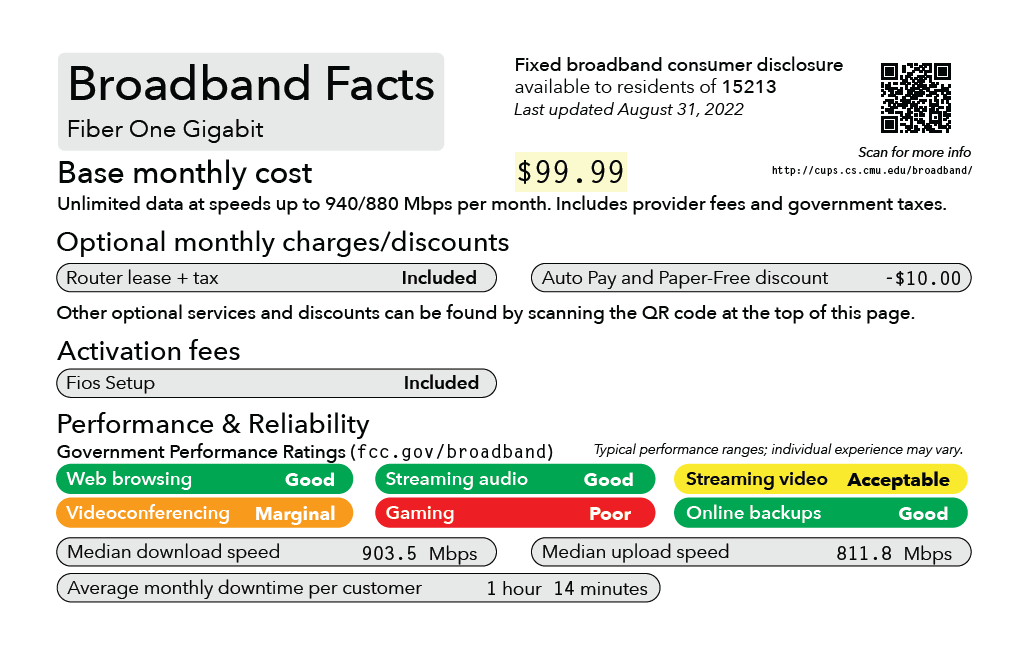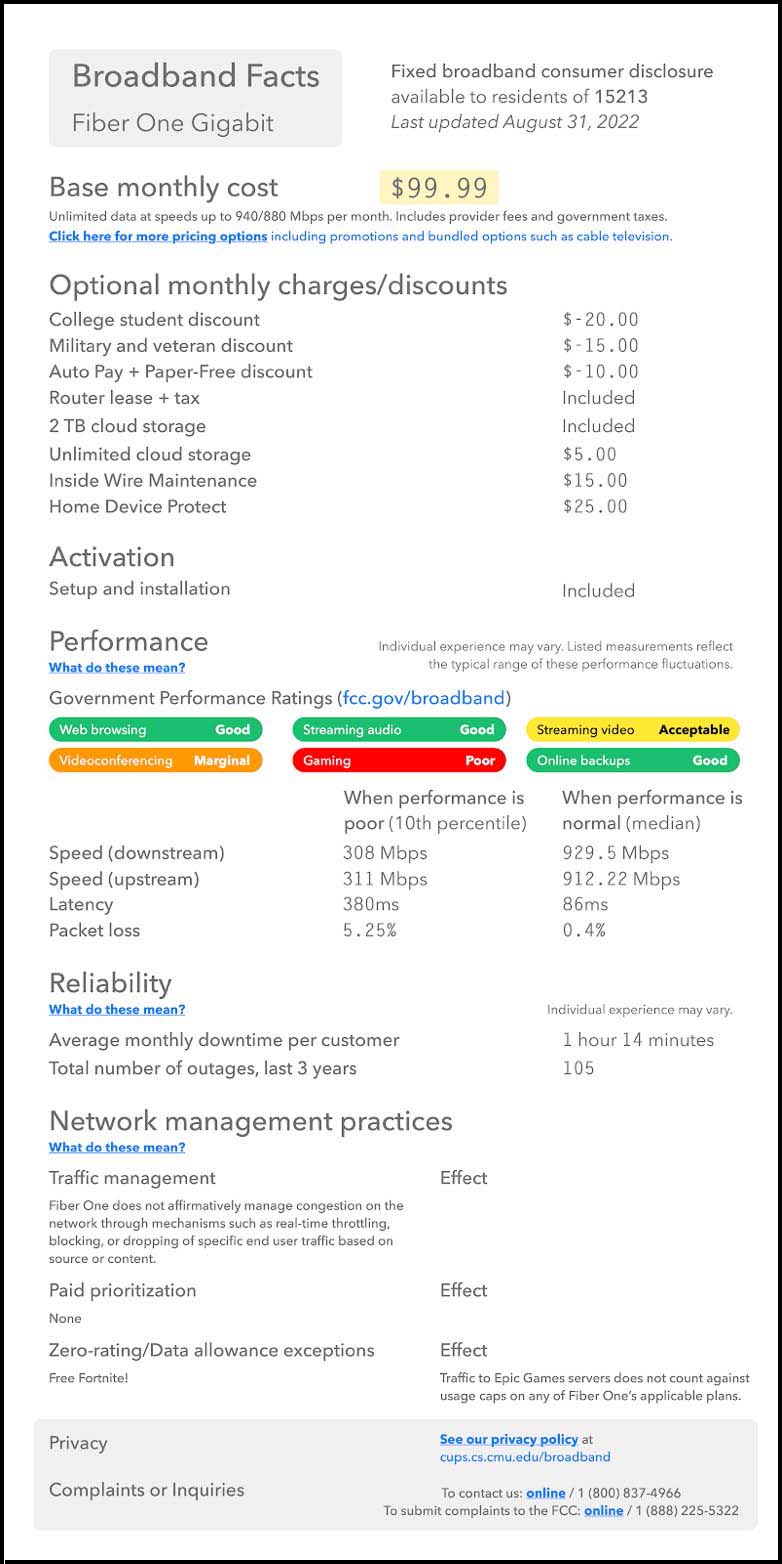
New Study on Broadband Labels from CMU Researchers, including CEE-TP Director
The Federal Communications Commission (FCC) has been discussing the idea of requiring all Internet service providers to describe their broadband services using standardized labels since 2009. These labels, resembling “nutritional labels”, are intended to make it easy for consumers to compare broadband services, and decide which service is best for them. In 2016, the FCC proposed templates for broadband providers to start using but the initiative was never implemented. In January 2022, the FCC issued a Notice of Proposed Rulemaking (NPRM) 22-7, which once again proposed establishing rules that would mandate the use of consumer-friendly standardized labels. This sparked extensive debate over how interested consumers really are in broadband labels, and what kind of labels consumers would most like to see.
In response to the FCC’s NPRM, a team of researchers from CMU conducted the first large-scale user study examining the preferences of Internet users with respect to broadband labels. The research team included Jon Peha, Director and Founder of CEE-TP, EPP Professor and a former Chief Technologist of the FCC, Lorrie Faith Cranor, EPP Professor, Director of CMU’s CyLab Security and Privacy Institute, and former Chief Technologist of the Federal Trade Commission, and three students, Christopher Choy, Ellie Young, and Megan Li. The research team conducted a two-phase user study that surveyed more than 2500 participants to gain insight into what information is most important to US-based consumers, and what formats are easiest to understand.
The research team found that consumers overwhelmingly want labels that they can use to compare services. Consumers wanted clear information on cost, and some had a hard time determining which service is cheaper from existing labels. Consumers wanted a clear understanding of performance. Whereas today’s advertisements typically tell consumers downstream speeds under ideal conditions and nothing more, consumers wanted to see other performance measures such as upstream speed, and they wanted to know performance when it is average and well below average rather than just performance at its rarely-achieved ideal., Consumers also wanted to know how often a broadband service was unavailable due to outages, and whether an r ISP uses network management practices such as deliberately slowing down a consumer’s service when that consumer’s Internet use reaches some monthly limit.
In response, the team developed a new label format that consumers preferred to the FCC’s 2016 design. Furthermore, they recommended that all information found on the labels be made available to independent third parties through a publicly accessible computer-readable database so that trusted third parties can create their own tools that consumers can use to compare broadband services.
The researchers hope their research will help the FCC better meet consumer needs and preferences as they draft broadband label requirements.
To read the full report, visit https://cups.cs.cmu.edu/broadband/CyLabBroadbandReport24Oct22.pdf
 A detailed
A detailed